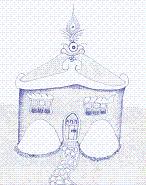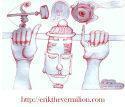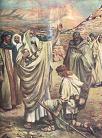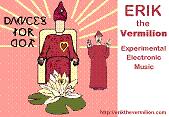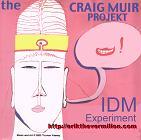Be Kind! Share with your Team, with your Family, with your Buddies!
Click The Button Now & Like This On Your Facebook Page!
Monday, December 23, 2013
Common Myths on Trimming Trees
One of the most important elements of tree care and upkeep is tree pruning. Unfortunately, it is one of the things that some people think that anybody can do with a simple pruning tool. In most cases, this useful maintenance procedure is misapplied as a result of the common myths that mask its true value as well as the proper way to execute it. What many people don't understand is that proper tree pruning can dramatically enhance the tree's health, form and value. Here are just some of the usual tree pruning myths that you should really know about.
1. Trees don't need pruning. Timberland trees thrive just well with mother earth's own techniques of pruning. But, the trees that rise in your yard have different needs. Tree pruning is vital for most suburban trees to maintain their shape and to get rid of quick-growing water sprouts. It also serves to boost the health of trees by eliminating the dead or broken limbs, preserves branch structure, lessen hazards including very low hanging limbs and falling limbs. On fruit bearing trees, pruning also helps to spruce up their size and yield.
2. Slash next to the trunk to help the tree replenish its damaged tissues. Trees can't restore their damaged or lost tissue. Therefore, their cuts don't really heal as human wounds do. Since they can't repair damaged tissues, they develop new layers of wood to mask their wounds. In contrast to the misconception, you should avoid cutting too near the trunk of the tree or the major limb to prevent hurting the branch collar and creating an ever larger wound.
3. Trees have to be massively pruned to help them recover from root loss. Cutting back the top of a tree can help lower the water evaporation from the foliage. However, a full crown is important to manufacture more food and plant hormones required in root growth. Extreme pruning will actually interfere with the growth of an extensive root system. Pruning is only best carried out at the time structural training and for the clearing of dead or damaged limbs.
4. Trees may be pruned at any time of the year. The best time of the year to have a tree trimmed down is during winter months, unless of course if called for because special circumstances such as to get rid of safety hazards. Trim your trees late in the cold season to minimize winter injury. The trees that bloom last should be pruned first and the earliest blooming trees last. You should also take into account the age of the tree to figure out which tree should be pruned first. Trim the oldest trees first since younger trees are more at risk to winter injury because of early pruning.
For more information about affordable tree pruning Perth services, simply visit the WA Treeworks website by clicking on the given links.


